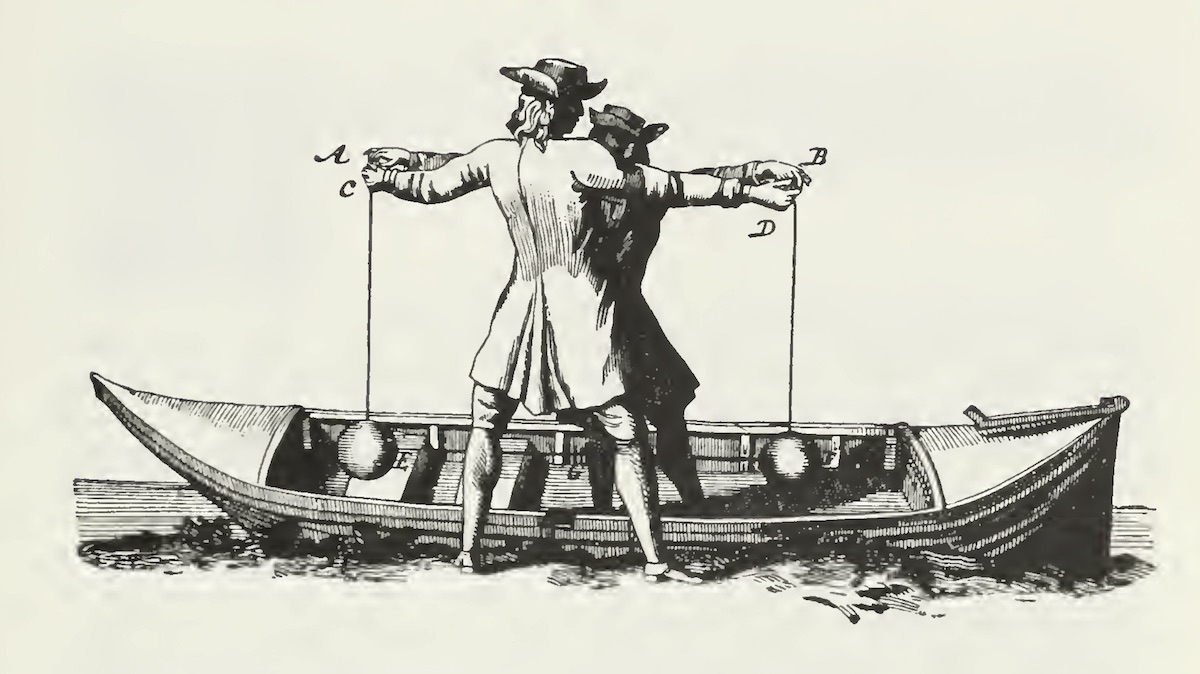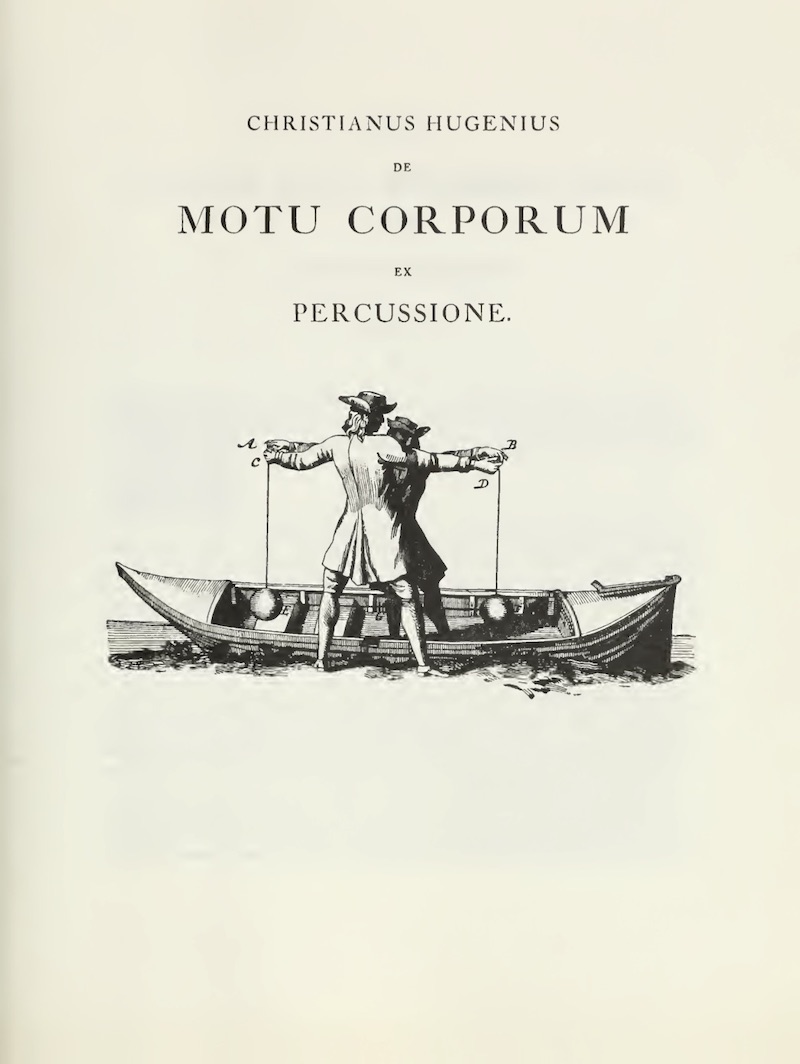
| HPS 0628 | Paradox | |
Back
to doc list
Back to Mechanical Supertasks
Huygens' Boat
Supplement to Mechanical Supertasks
John D. Norton
Department of History and Philosophy of Science
University of Pittsburgh
http://www.pitt.edu/~jdnorton
The rules for resolving collisions used in the main text were discovered in the seventeenth century by Christiaan Huygens (1629-1695). He was one of the most fertile thinkers of the seventeenth century. He made foundational contributions in many areas, including mechanics, optics and probability theory.

His rules for resolving collisions were published posthumously in 1703 as de Motu Corporum ex Percussione (The Motion of Colliding Bodies) in a collection of his published works. The famous image shown above was included in that edition at the end, with a compilation of figures referred to in the text.
The image illustrates his use of the relativity of motion in mechanics to arrive at general laws of collisions. That is the same approach used in the main text. He explained the figure as:
"For example, someone who is carried along by a boat which progresses with uniform speed makes two equal balls collide with each other with equal speed as determined in relation to himself and to the parts of the boat. We say then that each ball ought to rebound with an equal speed in relation to the man carried along in the boat, as would clearly also happen if he had made the same balls collide with equal speed while he was standing in a motionless boat or on the ground."
This was the first step in his analysis. The comparison of the colliding motions of the balls on the moving boat and on the unmoving shore continues through the development of Huygens' text.
While the 1703 publication had left this image to the end of the text, a newer 1929 edition of Huygens' works included it with the title page of de Motu.

February 2, 2023
Copyright, John D. Norton